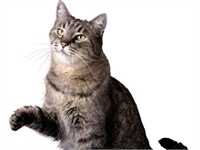
Understand Cat Smiles, Anger, and Other Visual Cues
Important Notice: Our web hosting provider recently started charging us for additional visits, which was unexpected. In response, we're seeking donations. Depending on the situation, we may explore different monetization options for our Community and Expert Contributors. It's crucial to provide more returns for their expertise and offer more Expert Validated Answers or AI Validated Answers. Learn more about our hosting issue here.

Understand Cat Smiles, Anger, and Other Visual Cues
You must be logged in to post a comment.
How to Tell When a Cat Smiles and Smile in Cat Language
Once you know how a cat smiles, you will discover that you can smile the way your cat smiles just as easily. When a cat is content, you will see it closing its eyes in a sleepy manner while looking at you and then might turn its head away after a few seconds. To smile like a cat, you will need to do the same. Simply look at your cat and blink slowly like you were falling asleep. Then look away from your cat. If you blink at your cat slowly and long enough, you’ll notice that your cat will likely smile back at you.
Just like humans, cats don’t always reciprocate a smile, so if your cat is eating or busy cleaning, don’t take offense if your cat is not keen to say “I’m content” to you with a smile.
Anger Signals and Other Visual Cues
Your cat’s ears, face, tail, and overall body language can indicate a long list of emotions. If your cat’s ears are back, this is a well-known indicator of fear and warning to stay back “I’m ready to swat at you in defense.” Other indicators are less obvious, but very noticeable once you learn to recognize them.
A flickering tail: If your cat has a flickering tail, it is feeling uncertainty. Depending on the situation, it can also mean that it is getting frustrated and will soon become angry if not left alone.
A slowly waving tail: A cat with a tail that waves from side to side is confident in its dominance and is being welcoming of attention.
Tail mid-level: A cat that does not have its tail in the air is unsure of its standing in the home or its security. You need to comfort a cat that does not have a tail in the air, as this is a sign of fear and concern of other cats.
Tail tucked under body: A cat with a tucked tail is frightened and uncertain of its surroundings. This is a cat that is fearful for its life and is likely to defecate or urinate on itself in fear.